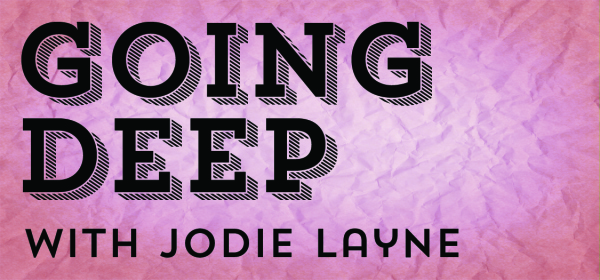The crowds filed out of the matinee amidst over-the-top pronouncements like, “I will never look forward to anything ever again,” and, “I feel like I just got stabbed in my youth.” They did so bent-back, like defeated soldiers, sloughing knee-deep through the demolished refuse of childhood hopes and dreams. Yes, Spike Jonze’s film adaptation of Where the Wild Things Are was a special kind of disappointment for many. It was more than a bad film, it was a straight-up affront to anyone emotionally invested in the 1963 picture book. Some jilted extremists have even alleged that the experience coloured their view of the original work itself.
But, fear not, shattered reader. Where there is darkness and despair, there is also the Manitoban. Yes, we are here, as always, to assuage your hurts and replenish your hopes. Let it be said that Where the Wild Things Are is, indeed, a very good picture book. But, more importantly, let it also be clear that there are way better picture books out there. Picture books so subversive, so enchanting, and so elusive in their charm that Hollywood should never be able to destroy them. So turn that frown upside down, you big kid. Here are four un-filmable fixes for your post-Where The Wild Things Are existential crisis.
Goodnight Moon by Margaret Wise Brown and Clement Hurd (1947)
Somehow, “film” has acquired this haughty air of repute, while picture books get dismissed as simple “children’s literature.” This is wrong. Indeed, picture books are crafted by adults and, as such, reveal a wealth of insight into the adult psyche. Or, more accurately, adult perceptions of childhood, often as this incredibly melancholy secret garden of whimsy and despair, innocence and loss, shits and gigs.
One of the most evocative examples of this melancholy is Goodnight Moon. Read literally, it is beautiful in distillation — a simple narrative of the nightly bedtime ritual. A young rabbit bids her possessions, her reality, goodnight. A red balloon. A painting of bears in chairs. Slowly, her attentions begin to move beyond the walls of her room — “Goodnight stars.” Then, beyond even the material world — “Goodnight air.” And then a stark white page — “Goodnight nobody.”
It’s a haunted passage, and its language presages the denouement of Philip Larkin’s 1967 poem “High Windows,” about the secularization of British society. Indeed, in a more “adult reading,” Goodnight Moon represents nothing less than a child’s burgeoning awareness of atheism. Beyond the trivial things into which we invest our attentions, beyond what we can see, beyond even the air — there is no one, and there is nothing. Goodnight Moon? More like Goodnight God. Or Goodnight Hope.
How Hollywood might be able to fuck it up: Making the kid’s toys and possessions come to life and frolic, via CGI, after she goes to sleep. This would, of course, undercut the book’s beautiful, inspiring, message that there is no magic, no god, no anything.
Königin Gisela (Where the Girls Are) by Nikolaus Heidelbach (1994)
Pictures books often recall Leonardo’s maxim — that simplicity represents “the ultimate sophistication.” Indeed, they are disarmingly direct — simple pictures and text. Yet, when considered more deeply these pictures and text often reveal a very complex co-habitation. They have an uncommon tonality, and usually behave like assholes toward one another — subverting wherever possible, and always trying to out-ironic each other.
A wonderful example of iconotextual interplay is Königin Gisela, a little-known work originally published in German. An alphabet book, it recalls Gorey’s similar work, except even darker and more transgressive. For instance, the relatively benign text “Y is for Yvonne waiting for a movie” is inter-animated by a young girl sitting alone in front of a TV with an arsenal of weaponry — battle axes, morningstars and such — lying at her feet. “D is for Deidre practicing for a career” accompanies a girl dressed as the Pope giving a Nazi salute, an ironic commentary on the politics of gender, religion and fascism. Or something.
In all, Königin Gisela is the sort of thing that can only be summed up in vaguely intelligent-sounding French words. It is the plaisir, or the pleasure of expected patterns (an alphabet book) colliding with the jouissance, the joy of unexpected disruption and resistance (kids with axes).
How Hollywood might be able fuck it up: Letting Tim Burton direct it, so that it, you know, is “Gothic” and stuff.
Rosie’s Walk by Pat Hutchins (1971)
Picture books are crazy sexy. They can be some of the most sexually-charged material imaginable, even more than the latest Antonio Banderas blockbuster release. Indeed, Freud was bang-on when he basically said that everything is about sex. The only reason people even pretend to disregard him is because people generally hate it when other people are right.
Rosie’s Walk seems simple enough. A hen decides to go for a morning walk, a fox spots her, gives chase and, in the process, runs into a series of Chuck Jones-style obstacles. Uh oh, is this story making you feel “hot in the pants”? No? Okay, let’s try a more forceful reading. Rosie, walking no place in specific, is sexually presenting with assurance and fetching plumage of crimson. It is a colour re-enforced by her name and enacted in literature since before “Little Red Riding Hood,” to announce menstruation and now-blossomed womanhood. The fox, he of hollow, mindless gaze, and phallic tail frozen erect, is predatory in the basest sense.
The sexual pursuit is inevitably futile, as it is in all the best stories about sex. Indeed, the fox is never allowed to hook up with Rosie, and, after awhile, we kind of get the feeling that he doesn’t even want to anymore. He seems to have a found deeper sense of purpose in fucking things up for himself. Yes, in its quiet way, Rosie’s Walk reminds us that the erotic is always “elsewhere,” and that it would only evaporate on consummation anyway.
How Hollywood might be able fuck it up: Mandy Moore would be cast as the hen. The fox would be some dreamy exchange student. Rom-com would ensue. She would have cancer. Rosie’s walk would be a “walk to remember.”
Flotsam by David Wiesner (2006)
Wordlessly, a young boy ambles over an empty beach. Ahead, deep in the foamy surf, a sheen catches his eye. Out of the the dulse and seatangle, the boy pulls an old-tymey camera, a contraption that looks as if it just warp-whistled in from Jules Verne’s imagination. Engraved on the front are the words “Melville Underwater Camera.” The boy gets the film developed, and fantastic evidence of undersea kingdoms and of unknown sea-monsters is revealed. Should the boy share it with others or keep it all to himself? Is it even real? What is real?
Such is the premise of Flotsam. Recipient of the 2007 Randolph Caldecott Medal for most distinguished picture book, it’s dream-like narrative is prototypical David Wiesner, an author who’s been keepin’ it surreal for over 20 books now. Flotsam is also an intensely cerebral experience, but in a dream logic sort of way, in which the conditions of what we see as “normal” are violated. There’s also a shit-ton of layers here — the as-yet unexplored corners of the world and the as-yet unexplored corners of the mind. The temptation of elsewhere and the more subtle promise of the “here” and “now.”
Best of all, Flotsam is wordless, a Wiesner hallmark which invites us to fill in the narrative. It also makes the experience feel somehow more alive, because, as Nietzsche put it, “That for which we find words is something already dead in our hearts.” Yes, Flotsam is those pure, tentative, movements and stirrings for which there are yet no words, no logic and no recourse.
How Hollywood might be able to fuck it up: Dave Eggers would write the screenplay. The sea-monsters would be “sad.”



